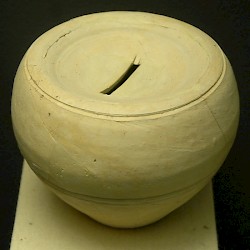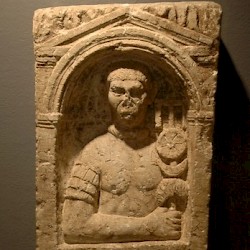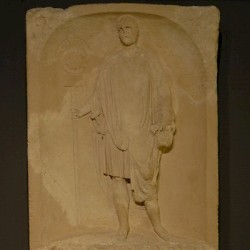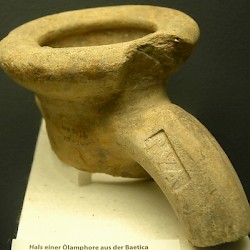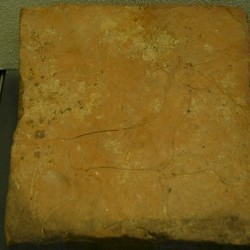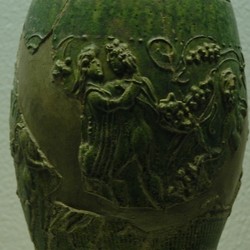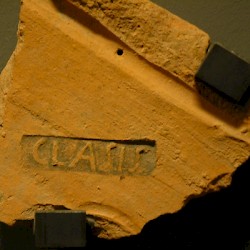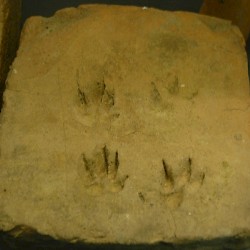Novaesium (Neuss)
Q318196Novaesium: Roman legionary base on the Rhine, modern Neuss.
Early History
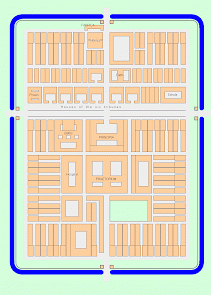
Novaesium was, together with Nijmegen, the oldest military base in Germania Inferior, founded by Drusus before 16 BCE. It was built on a natural terrace that was protected in the south by a little river, the Erft. Launching his campaigns from Nijmegen and Neuss, Drusus conquered the fertile valley of the Lippe on the east bank of the Rhine. The base at Neuss measured about 24 hectares, which is larger than other one-legion bases like Anreppen (23 hectare) or Haltern (19 hectare).
Neuss was possibly occupied by the Nineteenth Legion. After a couple of years, Nijmegen and Neuss were abandoned because the army was transferred to Oberaden, situated on the bank of the Lippe.
Empire
In the second quarter of the first century CE, the legions returned to Novaesium: V Alaudae, XX Valeria Victrix (until 43) and XVI Gallica are known to have stayed at the new legionary base, sometimes rebuilding parts of it. At first, the fortress was made of wood, but after the mid-first century, it was rebuilt out of stone.
During the Batavian revolt (69-70), the Sixteenth performed badly and Neuss was destroyed. However, it was rebuilt and VI Victrix stayed at this site until c.95 (or 102?). Pottery from the kilns of the Twenty-second legion Primigenia at Xanten belongs to this period too.
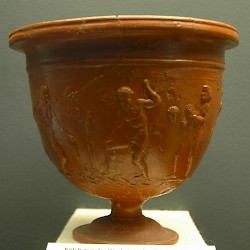 Neuss, Samian ware from Arezzo |
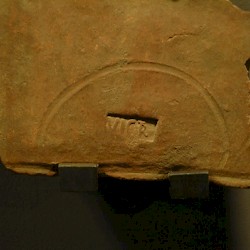 Neuss, Tile of VI Victrix |
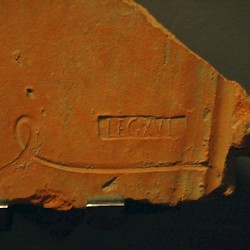 Neuss, Tile of XVI Gallica |
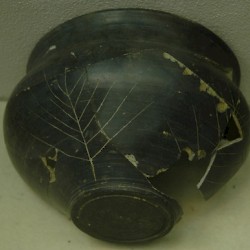 Neuss, Terra nigra with a fir tree |
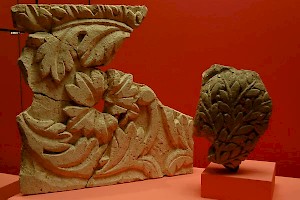
The civil settlement remained intact until 275, when the town was destroyed by an invasion of Franks. Although the land became increasingly depopulated, Neuss was repopulated and fortified. However, the town was (according to written sources) destroyed by the Alamanni in the mid-fourth century. The Roman general Julian, who was destined to become emperor, rebuilt the town. There is no archaeological evidence to confirm this information.
Late Antiquity
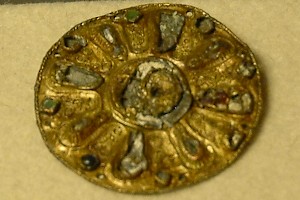
The site remained occupied in Late Antiquity, although much is unclear. Toponyms containing Germanic elements like heim or hof ("home" and "farm") prove that the land was occupied by new settlers, and several Frankish tombs from the fifth, sixth, and seventh centuries have been found in the inner city of Neuss. That the walls were still standing can be derived from a ninth-century chronicle that mentions the "castellum Niusa".
There may have been a bridge across the Rhine at Neuss, but the archaeological evidence is ambiguous. Today, there are no visible remains of ancient Neuss, although the main road through the modern city, the B9, follows the course of the ancient road.
Near Neuss was a small fort at Reckberg.
In Neuss is the small Clemens Sels-museum, which has a, among other things, a collection of Roman objects.
